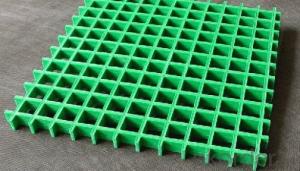Fiberglass cloth is a versatile material that has found its way into various industries, but it truly shines in marine construction. It’s not just a material; it’s the canvas on which the dreams of marine architects and boat builders come to life. This article will explore the world of fiberglass cloth in marine construction, its advantages, and why it’s the preferred choice for many in the industry.
The Canvas of Marine Construction
Imagine a canvas, blank and waiting for an artist’s touch. That’s what fiberglass cloth is to boat builders – a blank slate ready to be transformed into a masterpiece. It’s lightweight, strong, and flexible, making it the perfect material for creating the sleek and sturdy structures that boats require.
A Material with a Rich History
Fiberglass cloth has been around for decades, and its history is as fascinating as the material itself. It was first developed in the 1930s and quickly gained popularity due to its strength and versatility. Over the years, it has been used in various applications, from automotive to aerospace, but its use in marine construction has truly set it apart.
Why Fiberglass?
So, why is fiberglass cloth the go-to material for marine construction? Let’s dive into the reasons.
1. Durability: Fiberglass cloth is incredibly durable. It can withstand harsh marine environments, including saltwater, UV rays, and extreme weather conditions. This durability ensures that boats built with fiberglass cloth can last for a long time without needing frequent repairs or replacements.
2. Corrosion Resistance: One of the biggest advantages of fiberglass cloth is its resistance to corrosion. Unlike metal, it doesn’t rust or corrode, which makes it ideal for use in saltwater environments where corrosion can be a significant issue.
3. Lightweight: The lightweight nature of fiberglass cloth contributes to the overall performance of the boat. It allows for better fuel efficiency and easier handling, making it a popular choice for both commercial and recreational boats.
4. Customizability: Fiberglass cloth can be molded into various shapes and sizes, allowing boat builders to create unique designs tailored to their specific needs. This customizability is a significant advantage, as it enables boat builders to push the boundaries of boat design.
5. Cost-Effectiveness: Compared to other materials like wood or metal, fiberglass cloth is more cost-effective. It requires less maintenance and has a longer lifespan, making it a smart investment for boat owners.
The Art of Fiberglass Cloth Application
Applying fiberglass cloth to a boat is an art form in itself. It involves several steps, each requiring precision and skill.
1. Preparing the Surface: The first step is to prepare the surface of the boat. This involves cleaning and sanding to ensure a smooth and even surface for the fiberglass cloth to adhere to.
2. Cutting the Cloth: Next, the fiberglass cloth is cut to the desired shape and size. This requires careful measurement and cutting to ensure a proper fit.
3. Application: The fiberglass cloth is then applied to the boat’s surface using a resin. The resin acts as a binding agent, ensuring that the cloth adheres to the surface and maintains its shape.
4. Curing: After application, the resin needs to cure. This process can take anywhere from a few hours to several days, depending on the type of resin used and the environmental conditions.
5. Finishing Touches: Once the resin has cured, the final touches are added. This may include sanding, painting, or adding additional layers of fiberglass cloth for added strength.
The Future of Fiberglass Cloth in Marine Construction
As marine construction continues to evolve, so does the use of fiberglass cloth. With advancements in technology and materials, we can expect to see even more innovative uses of fiberglass cloth in the future.
1. Eco-Friendly Initiatives: There is a growing trend towards eco-friendly materials and processes in the marine industry. Fiberglass cloth, being a non-corrosive and recyclable material, aligns well with these initiatives.
2. Advanced Manufacturing Techniques: New manufacturing techniques, such as 3D printing with composite materials, are opening up new possibilities for the use of fiberglass cloth in boat construction.
3. Improved Performance Materials: Ongoing research and development are leading to the creation of new types of fiberglass cloth with enhanced properties, such as increased strength and flexibility.
In Conclusion
Fiberglass cloth is more than just a material; it’s the canvas of marine construction. Its durability, corrosion resistance, lightweight nature, customizability, and cost-effectiveness make it the preferred choice for many in the industry. As we look to the future, we can expect to see even more exciting developments in the use of fiberglass cloth in marine construction. So, the next time you’re out on the water, take a moment to appreciate the fiberglass cloth that makes your boat not just a vessel, but a work of art.

